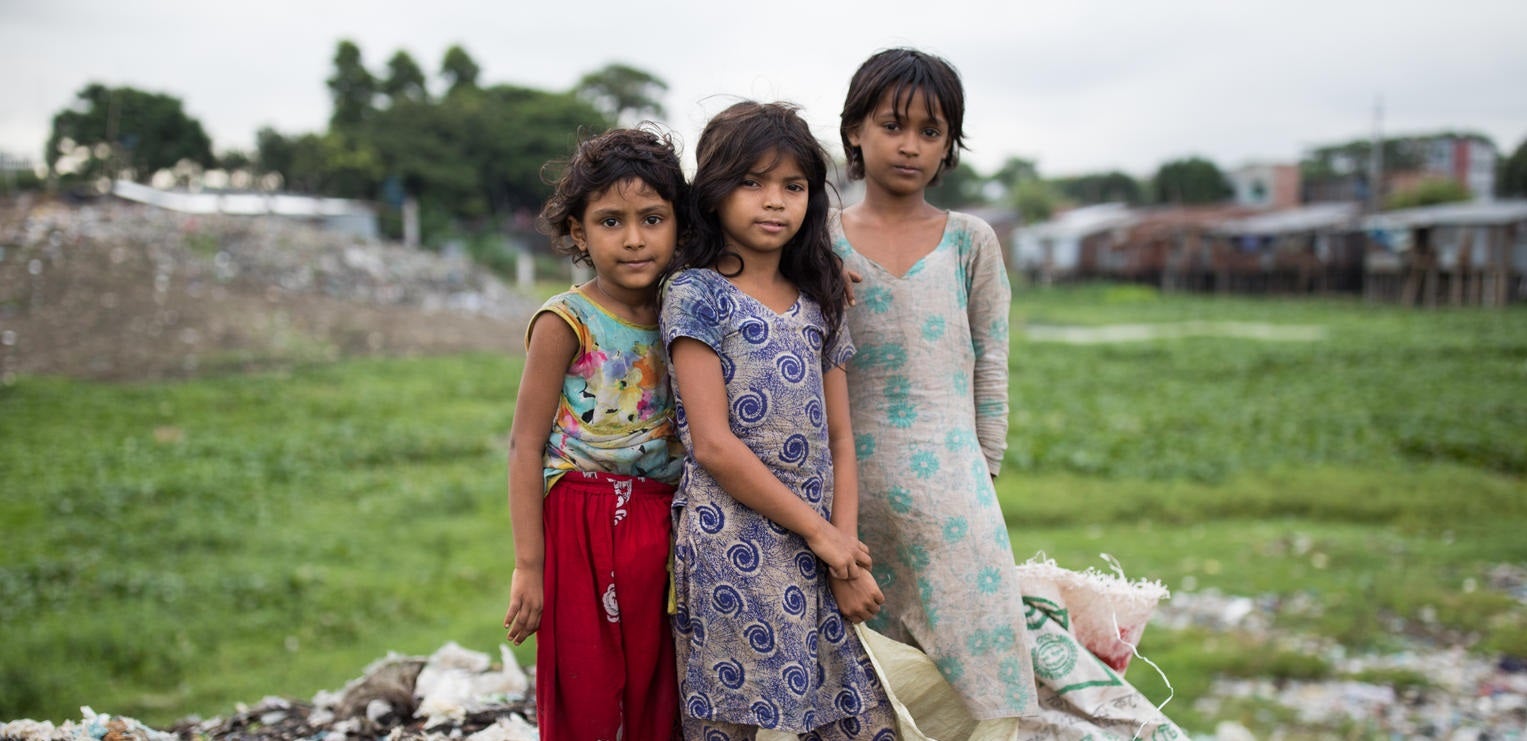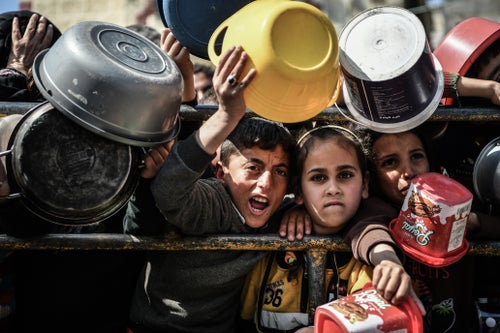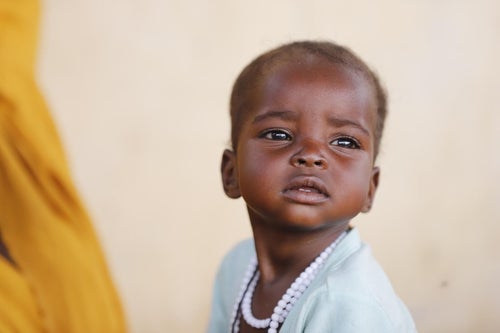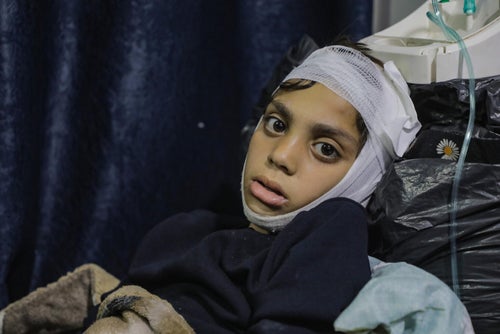Away from the spotlight of the media, a devastating crisis is unfolding in Sudan. Families are struggling to find their next meal, children are weakened by malnutrition and infection, and communities are being ravaged by hunger.
On 1 August 2024, famine was confirmed in Sudan’s North Darfur region, threatening the lives of 400,000 displaced people in the Zamzam Camp – reflecting the dire situation for families around the wider region.
Famine is often linked to climate shocks, such as prolonged droughts, but this is a man-made crisis that could have been prevented. Ongoing conflict, mass displacement and limited humanitarian access continue to wreak havoc, and heartbreakingly, it is children and their families who pay the heaviest price.
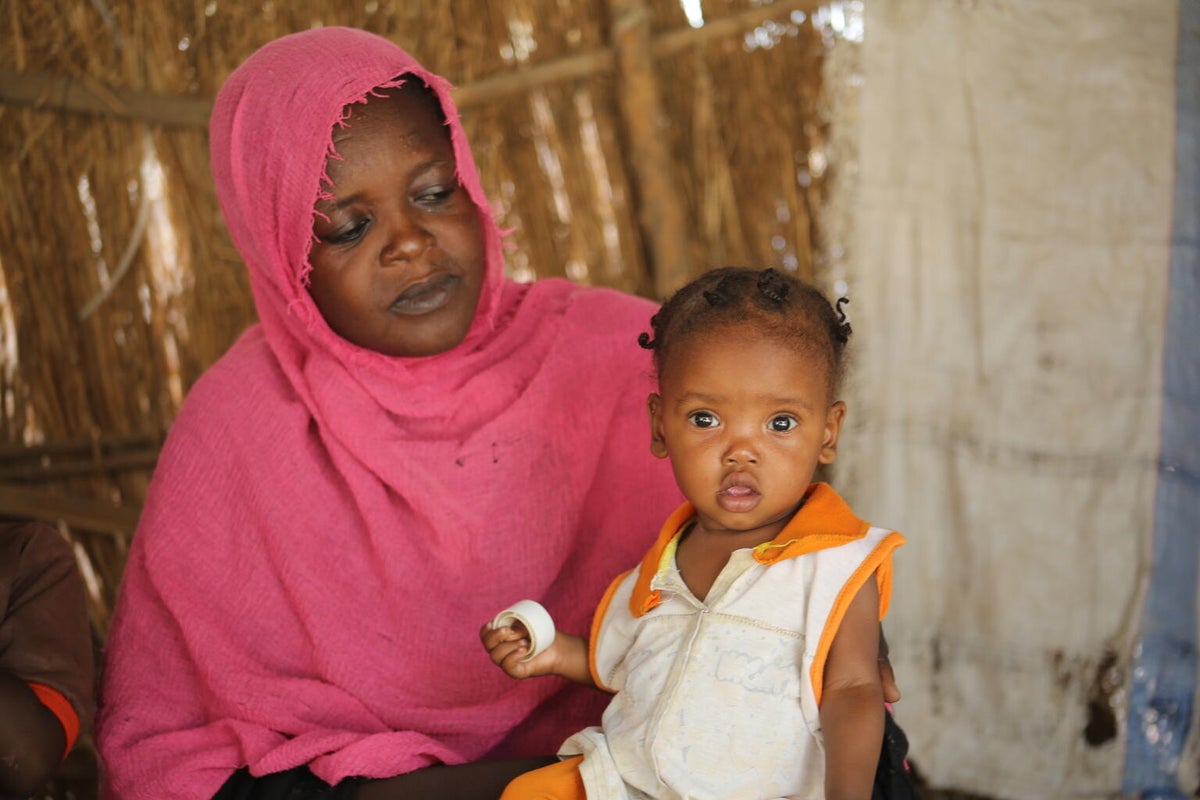
Where is the famine in Sudan?
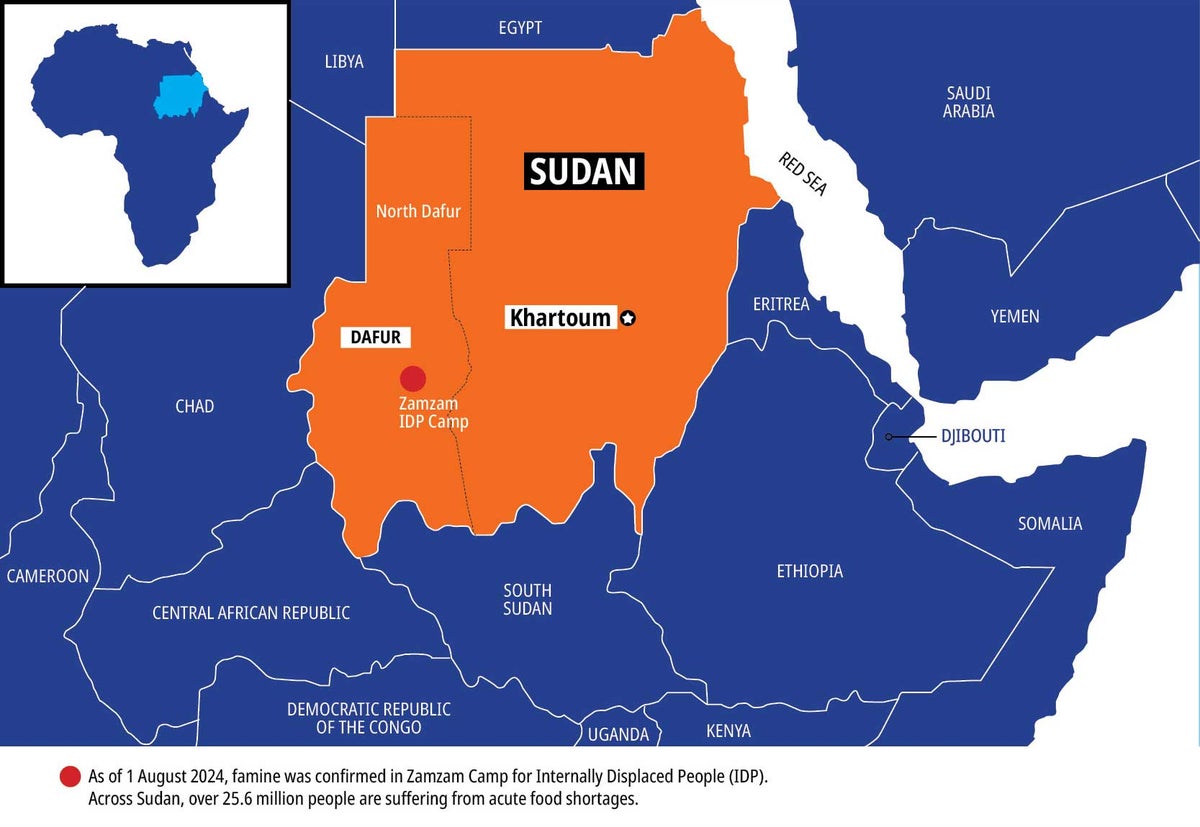
What caused the famine in Sudan?
Sudan’s ongoing conflict has been the leading cause of famine in the North Darfur region.
Since April 2023, Sudan has been embroiled in a civil war. The ongoing conflict and violence have created the world’s largest displacement crisis, with more than 11 million people, almost half of them children, internally displaced. The combination of conflict, violence, displacement, disease outbreaks, an overstretched healthcare system and severely restricted humanitarian access has created a catastrophic situation for children and families, which has resulted in famine conditions.
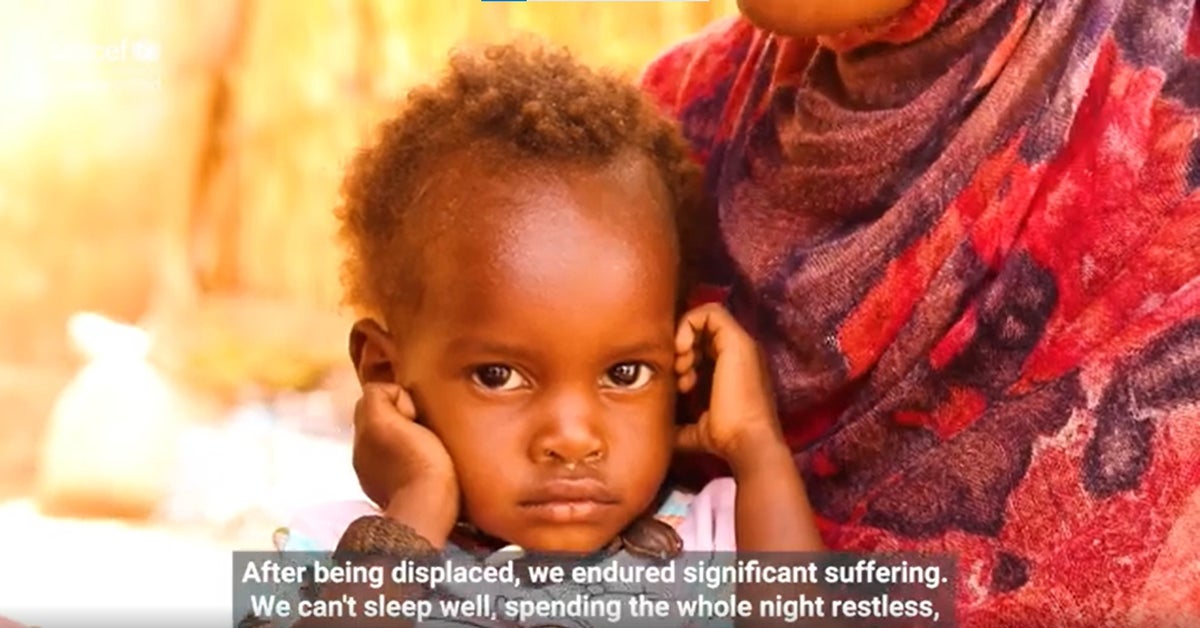
A mother and her children are fighting malnutrition in Darfur.
How severe is the famine?
Famine is the severest form of food scarcity, leading to widespread malnutrition, starvation and death. In Sudan, it’s a race against time, as heartbreakingly, famine has already been confirmed in Zamzam Camp in North Darfur region where children are dying of hunger and related conditions, including malnutrition and infection.
Beyond North Darfur, acute food shortages are affecting 25.6 million people across the country, with more than 756,000 facing catastrophic levels of hunger.
"Famine is occurring in parts of Sudan and is inflicting unimaginable suffering on children and families who are already reeling from the impact of a horrific war."
25.6 m
25.6 million people are experiencing high levels of acute food insecurity.
5 m
5 million children are displaced internally and across borders.
When is famine declared?
Around the world, the Integrated Food Security Phase Classification (IPC) is a tool that is used to keep track of hunger.
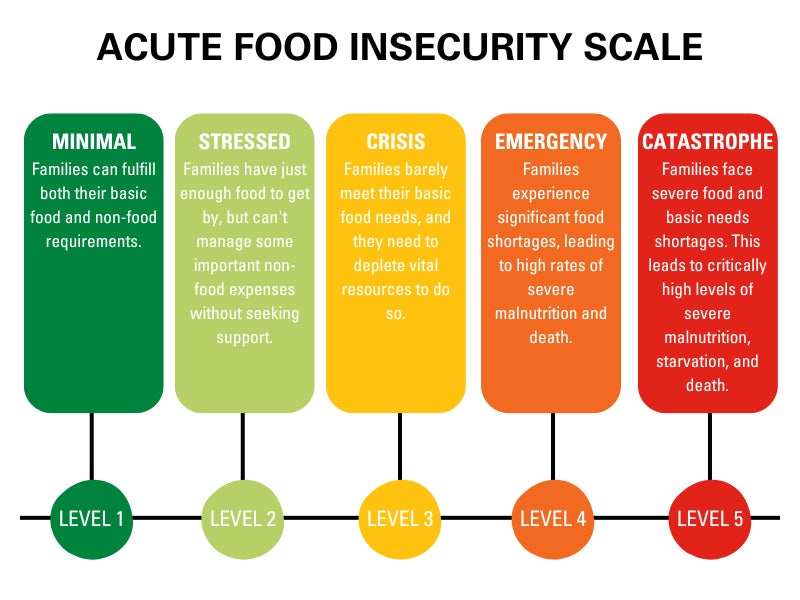
As the image indicates, level one is minimal, and level five is catastrophe (or famine).
For there to be a famine, all three criteria below need to be met.
- At least 20 per cent of households are facing an extreme lack of food.
- At least 30 per cent of children under five are suffering from wasting or other forms of acute malnutrition.
- At least two for every 10,000 people are dying each day due to outright starvation or the interaction of malnutrition and disease.
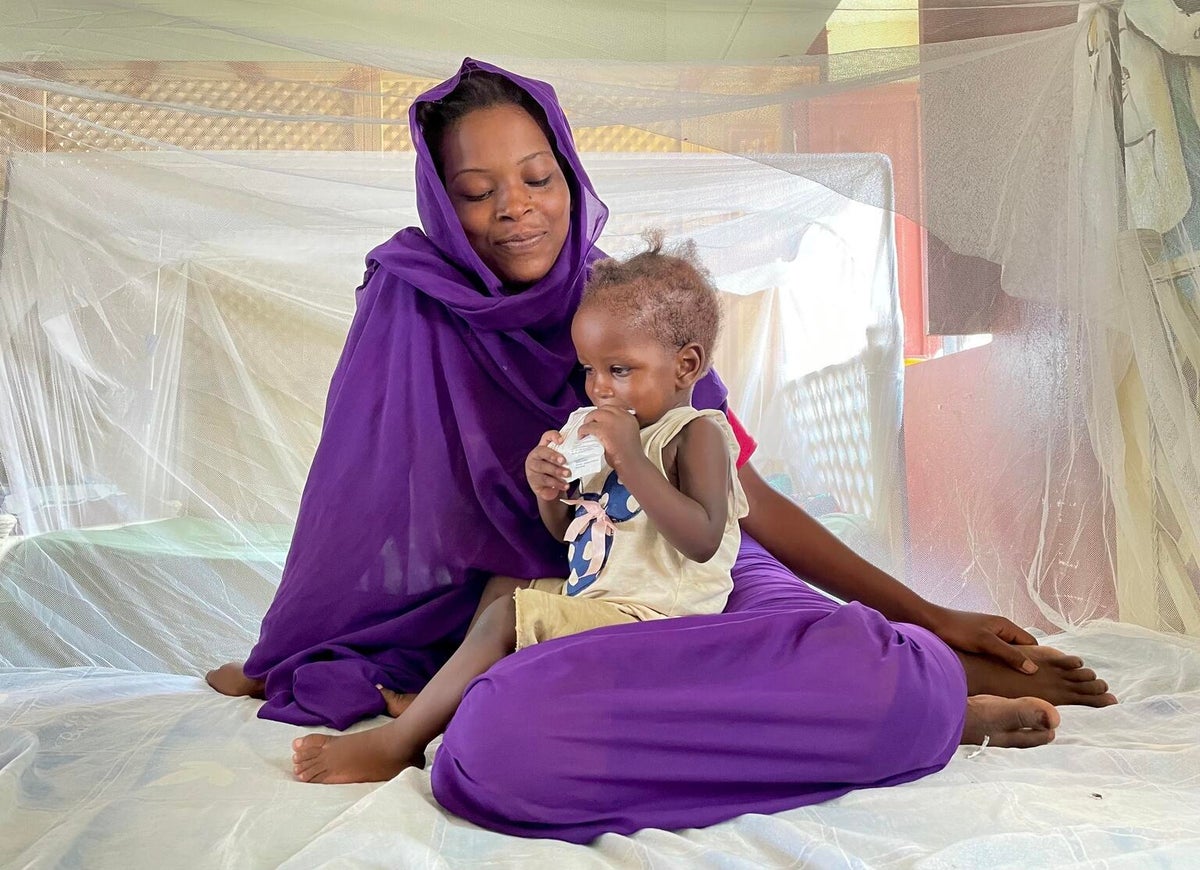
How is the famine affecting children in Sudan?
When children experience extreme food insecurity, they become more vulnerable to disease and developmental delays.
Children are the most vulnerable during periods of famine and extreme food insecurity, especially children under five. They face a greater likelihood of severe malnutrition, which weakens their immune system, leading to severe health and developmental challenges that can last a lifetime.
How UNICEF is helping children in Sudan
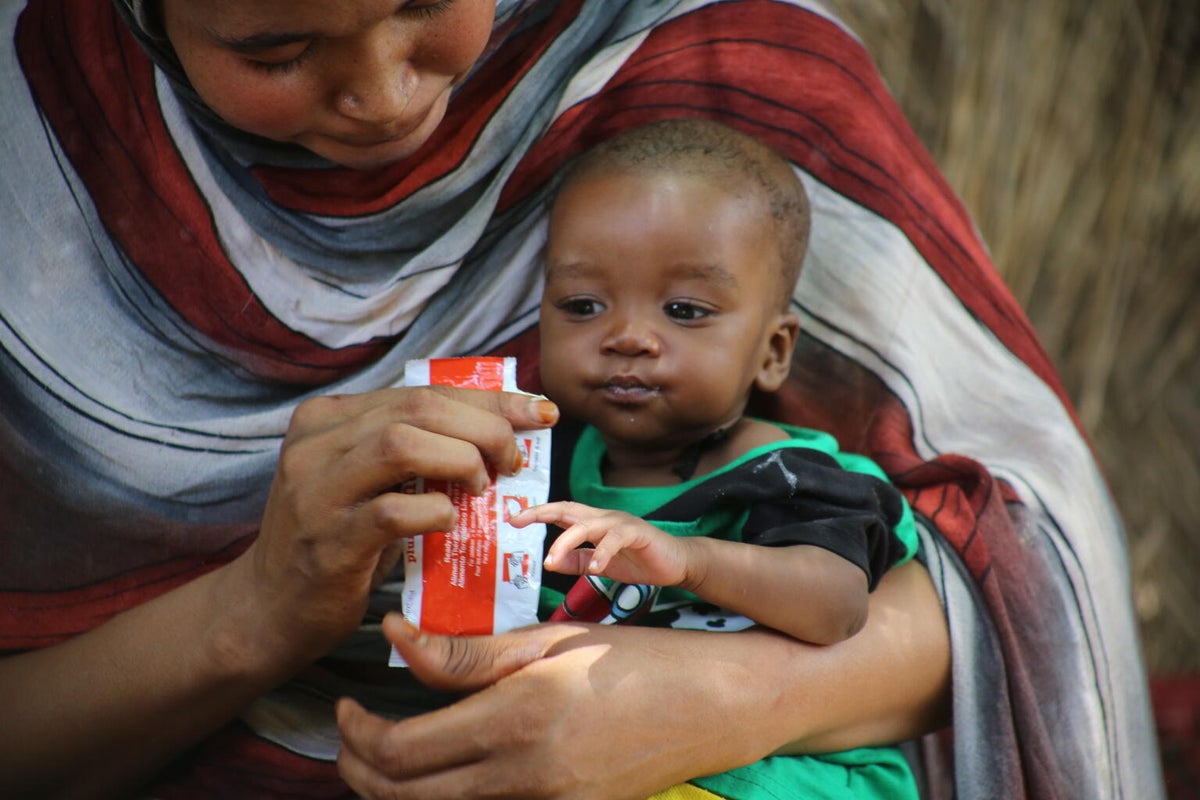
UNICEF and our partners have been in Sudan since the 1950s, working together to provide children and families with safe drinking water, lifesaving nutrition and healthcare, access to education, and keeping children safe from harm.
In 2024 so far, UNICEF has reached 5.2 million children and families with safe drinking water, 3.3 million people with critical health supplies, and almost 2.8 million children with malnutrition screening – over 133,600 with lifesaving treatment.
In response to the escalating food crisis, UNICEF is expanding treatment services, including lifesaving services through 70 mobile teams, to help reach children in need in even the most hard-to-reach communities.
"This famine is fully man-made. We again call on all the parties to provide the humanitarian system with unimpeded and safe access to children and families in need. We must be able to use all routes, across lines of conflict and borders. Sudan’s children cannot wait. They need protection, basic services and most of all, a ceasefire and peace."
Sudan Famine Crisis
Famine confirmed in Sudan’s North Darfur, threatening the lives of over 400,000 displaced people in the Zamzam Camp.
Related articles
Stay up-to-date on UNICEF's work in Australia and around the world


